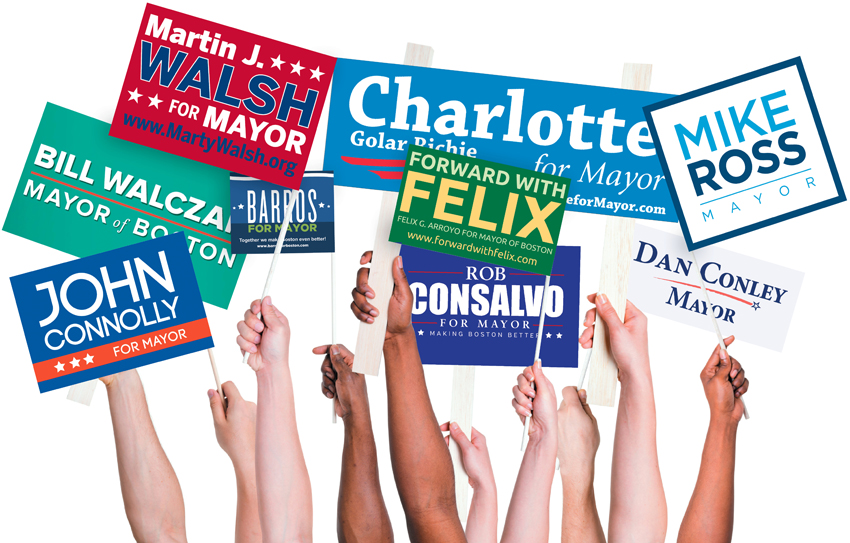City Limits: Meet Boston’s 2013 Mayoral Candidates

Hands Photograph by iStockphoto
Here’s one: What do you call seven candidates for mayor of the city of Boston?
Answer: a small gathering.
That’s what we had on the evening of May 6, in the basement of the Covenant Congregational Church in Jamaica Plain. A local neighborhood group had organized a mayoral forum, the first of the campaign, and it was an informal, hastily planned affair—small enough that audience members could go around and take turns introducing themselves by name. As candidates trickled in, they headed mostly for two folding tables set up at the front of the room, to sit and wait. City Councilor John Connolly, though, began working the crowd, shaking hands and passing out flyers. The other candidates seemed to eye Connolly warily (this early on, many of them didn’t even have flyers). Not wanting to be left out, Suffolk County District Attorney Dan Conley popped up from his seat and began greeting people. Not wanting to look like he was just following Conley, City Councilor Rob Consalvo stayed put and fidgeted.
Maybe he should have jumped up, anyway: At the time, there were some two dozen candidates in the race, and two more showed up at the forum that very hour. Though the race has since been whittled down to just one dozen candidates, each vote will matter. And this race will matter, more than any the city has seen in decades. With Mayor Tom Menino invincible for the past 20 years, Boston’s last heavily contested mayoral race was in 1993, and its last truly open election, with no incumbent, was in 1983.
Compared with back then, Boston today is almost unrecognizable. In 1980, 68 percent of the city’s 563,000 citizens were white. Today, Boston’s population of 636,000 is just over 50 percent minority. The Seaport has risen from nothing, and young people are packing into downtown. In the past decade alone, the number of Bostonians with advanced degrees has increased by some 20,000—our egg-headed friends now make up about 20 percent of the city. Power lines, race lines, and class lines have all shifted. This, in other words, is the first real mayoral election in what’s often called New Boston.
That said, New Boston is a complicated label. Its definition has always been slippery. Depending on who says it, it could refer to the techies whirring through our new Innovation District, or perhaps the new urbanites rushing into downtown, or our communities of color. Or it might just be a polite euphemism for “less racist.”
The truth is, despite all the studies and numbers, no one is completely sure of how today’s Boston—whether old or new or just freshly polished—will behave come election day. We know change has happened, but Menino’s dominance has masked it at the ballot box, practically numbing voters into indifference. We don’t know how a truly open election will play out or what effect it’ll have on the city—but we’re about to learn. With a preliminary election scheduled for September 24 to shrink the wide mayoral field down to two for November’s final, the city has nothing short of a chance to redefine itself.
Hoping to understand what that means, I shadowed the nine candidates who are generally considered to have the best shot, watching them as they zigzagged across the city, desperately trying to scrape up enough votes to advance to the final election. As they did, the outline of whatever Boston actually is today began to make itself clear.

